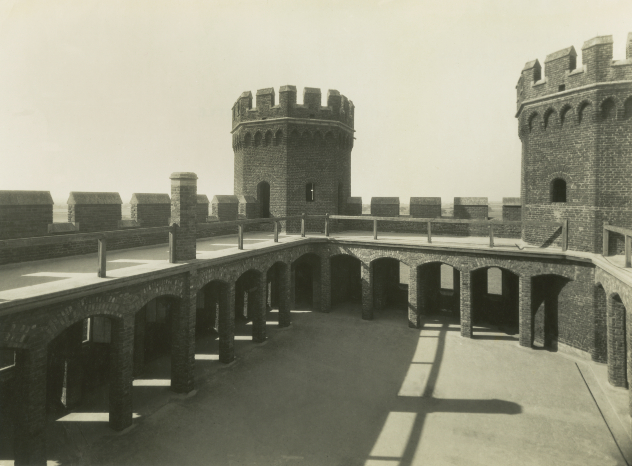Calliper
Category
Archaeological material
Date
c. 1500 - c. 1699
Materials
Copper alloy
Measurements
30 mm (Width) x 15 mm (Depth); 125 mm (Length)
Place of origin
England
Order this imageCollection
Tattershall Castle, Lincolnshire
NT 579489
Summary
Post-medieval copper-alloy dividing calliper (compass). Triangular in section with legs tapering to a point. Linked to a large ring formed from their opposing terminals. The upper end of each leg is decorated with a simple geometric design.
Full description
Callipers were used in many scientific disciplines including metalworking (to scribe a mark onto an object at a known distance, much like a compass) and cartography (to measure distances between two points on a map). This artefact was recovered during an excavation of the castle moat between 1912 and 1914 by William Weir at the bequest of Lord Curzon as part of the site’s restoration works. Around 1,300 objects were found during this excavation and largely date to the medieval and post-medieval periods when the castle was occupied. The collection comprises pottery, ceramic building material, plaster, worked stone, vessel and window glass, metal work and clay pipe.


